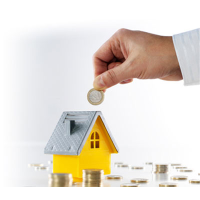
Nationwide’s figures revealed that the average property in November was valued at £163,398 compared to £162,764 in November 2009.
For the month, house prices fell 0.3% following a 0.7% drop in October. In addition, the three-month-on-three-month change, which offers a smoother measure of price trends, rose from -1.5% to -1.3%.
However, this still remained above the deep negatives of -5% to -6% that were recorded during the most severe phase of the 2008 downturn.
Nationwide added that, by comparison to the last major housing downturn in the early 1990s, house prices have fallen less, but house purchase activity has seen a much greater decline.
Martin Gahbauer, chief economist at Nationwide, said that there was little evidence to suggest that house price falls will accelerate in the months ahead.
He said: “Much of the weakness in property values since the spring has been driven by a return of sellers to the market, following unusually low levels of property for sale in 2009 and early 2010.
“However, there is little to indicate that these sellers need to achieve a sale urgently for financial or economic reasons, which means that the downward pressure on house prices is only modest.”
Gahbauer added that there were early signs indicating that the number of new properties coming to market was slowing as potential sellers see how weak prices are and decide against putting their house up for sale.
He said: “Similar seller behaviour was observed in late 2008 and early 2009, eventually leading to a decline in the amount of property on the market.”
By comparison to the early 1990s downturn, Gahbauer noted house prices tracked the path of the early 1990s very closely.
However, over the following 18 months, real house prices has a small rebound, while in the early 1990s prices continued to fall at the previous rate of decline.
He said: “As things currently stand, real house prices are 19% below their 2007 peak, whereas at the equivalent stage of the early 1990s downturn, they were 31% below their peak.
“The most likely explanation for this is that while real interest rates remained very high throughout the 1990-1992 period, they have fallen dramatically into negative territory in the current down cycle, providing more support to mortgage holders. The supportive interest rate environment shows up clearly in the number of repossessions, which has been much lower in the current downturn compared with the
1990s.”
However, Gahbauer said that house purchase activity has been notably weaker than in the 1990s.
He said: “Whereas in the 1990s the number of mortgages taken out for house purchase initially saw a large decline from unsustainable highs, it then settled close to the long-run average.
“In the current downturn, house purchase approvals have fallen to an all-time record low and are still close to 50% below the long-run average.
“This weaker profile of approvals is primarily due to the fact that the current housing downturn was accompanied by a global systemic banking crisis that limited the availability of credit. In the 1990s, by contrast, the banking system did not suffer a comparable crisis and the flow of credit did not become as constrained.”
















